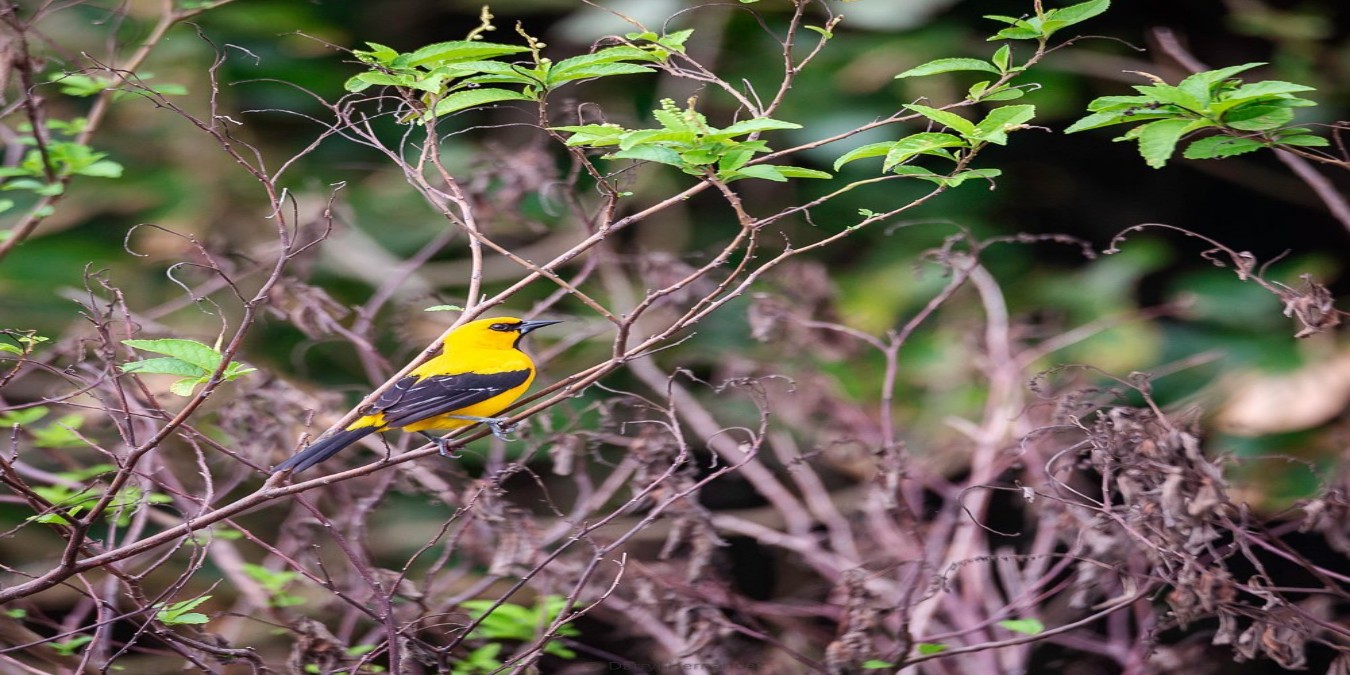The Yellow Oriole (Icterus nigrogularis), sometimes called the “Golden Oriole” or “Small Cornbird,” is one of the most common and widely recognized birds in Trinidad and Tobago. Measuring about 20 cm (8 inches) in length, it is a medium-sized oriole that adapts well to human presence. The species is commonly encountered in suburban gardens, open woodland, and the edges of mangrove swamps, where it moves actively among foliage.
Adults are predominantly bright yellow with distinctive black lores, throat, and tail, and wings edged in white. Some individuals show a golden hue on the head, giving rise to the alternative name, Golden Oriole. Immature birds are duller in colouration and lack most of the black markings. Its vocalizations range from a harsh, repeated cack in alarm to a beautiful, fluting song delivered in several musical notes, often heard in the early morning.
The Yellow Oriole feeds primarily on insects and other invertebrates, which it gleans from leaves and branches, but it also consumes berries, small fruits, and nectar from a variety of flowering shrubs and trees.
Breeding involves the construction of a remarkable pendulous nest, a tube of grass or palm fibres about 45 cm (18 inches) long, with the entrance hole near the top. Nests are typically suspended from medium-height branches. Occasionally, the Piratic Flycatcher (Legatus leucophaius) forces orioles to abandon a nest, but they generally rebuild nearby.
- Photo captured by @dh_photos_tt


Comments